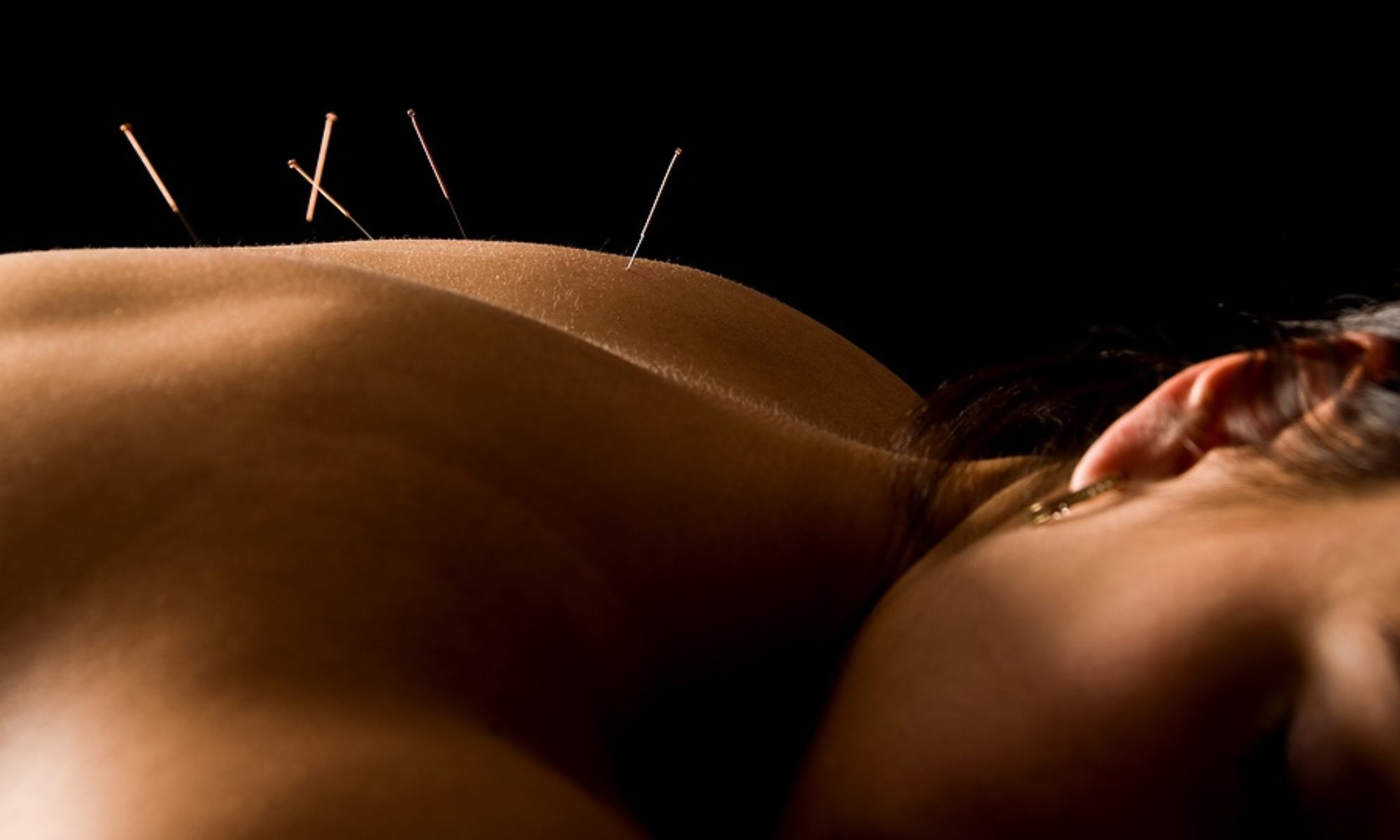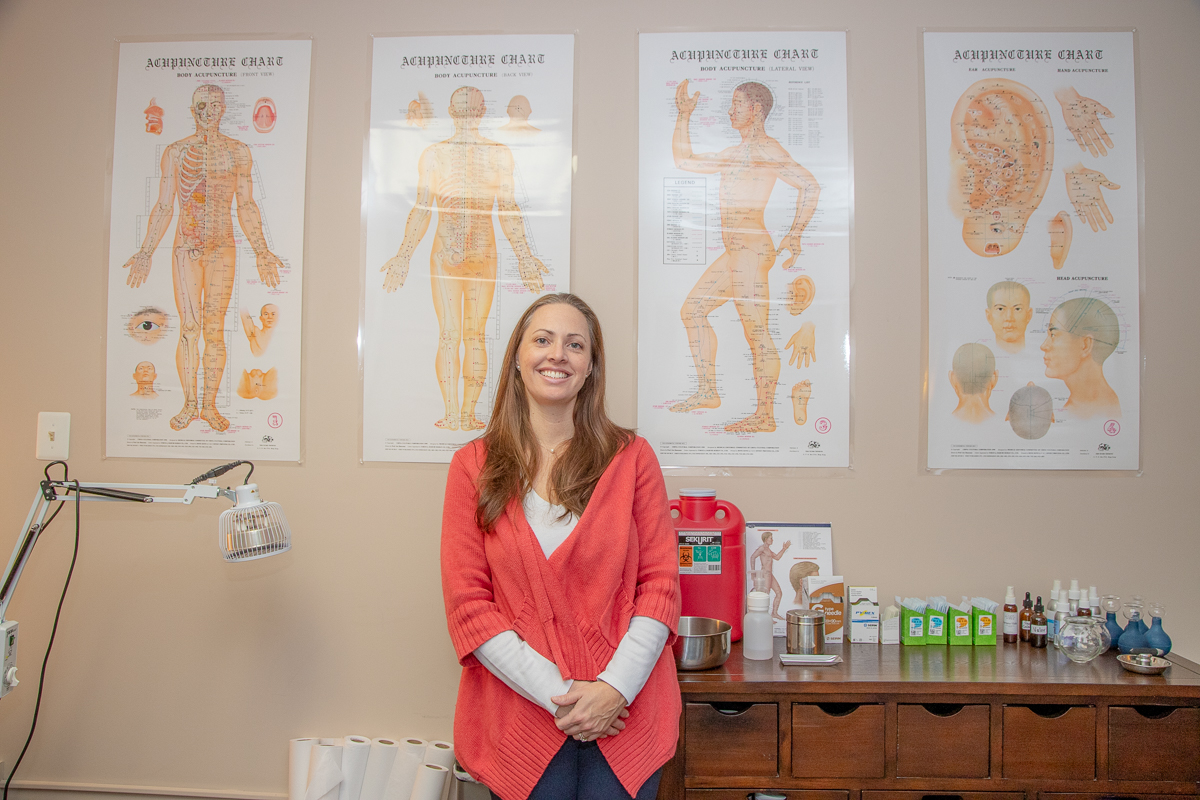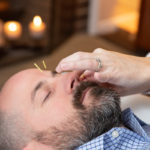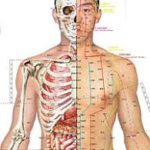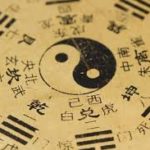According to the NIH, “Acupuncture is among the oldest healing practices in the world. As part of traditional Chinese medicine (TCM), acupuncture aims to restore and maintain health through the stimulation of specific points on the body. In the United States, where practitioners incorporate healing traditions from China, Japan, Korea, and other countries, acupuncture is considered part of complementary and alternative medicine (CAM)”.
In Traditional Chinese Medicine (also called East Asian Medicine), practitioners bring balance and harmony to the body, boosting the body’s natural ability to heal itself. Acupuncture is one of many techniques in Chinese Medicine that practitioners use in order to achieve this level of wellness. In acupuncture, a practitioner places sterile, stainless steel, thin needles in the body in order to stimulate certain points that run along meridians.
Meridians, also called Channels, run along the body carrying qi (pronounced “chee”) – the body’s energy. Meridians are like rivers, sometimes overflowing, other times running low, and sometimes blocked. An acupuncturist’s role is to promote smooth flow of qi, by either calming, boosting, or redirecting flow. A healthy body needs free flow of qi, and Acupuncture can provide that. With Acupuncture, the body’s balance of qi and yin and yang can be restored.
Recent research reveals how acupuncture works from a Western perspective… the insertion of needles activates the release of endorphins (which helps modulate perception of pain), changes blood flow patterns (affects pain and may contribute to acupuncture’s ability to decrease nausea and vomiting), and affects the hypothalamus-pituitary-adrenal (HPA) axis (which causes the decrease in stress and anxiety levels after treatment).
During the initial visit, Dr. Kerri will take a thorough intake and history to have a well-rounded view of your issue(s). After the discussion, Kerri will take about 10 minutes to place the needles in the body. Acupuncture is not supposed to be painful, and Kerri puts every effort into making the needle insertion as painless as possible. Then the patient rests with the needles for about 25-30 minutes. If applicable, Kerri will provide other therapies, such as Moxibustion, Cupping, Gua Sha, or Trigger Point Myofascial Acupuncture (also called “Dry Needling”).
- Initial visit (New Patients) – 90 minutes ($140) – Includes the following: thorough history taking and consultation, review of lab work and/or test results, Chinese Medical diagnosis, Acupuncture treatment, additional treatments such as Cupping, Moxibustion, Gua Sha, Trigger Point Acupuncture (“Dry Needling”), herbal therapy consultation, natural supplement consultation, treatment plan creation, and overall health review
- Follow-up visits (Established Patients) – 60 minutes ($95) – Includes the following: Acupuncture treatment, additional treatments such as Cupping, Moxibustion, Gua Sha, Trigger Point Acupuncture (“Dry Needling”), Herbal therapy review, and overall health follow-up
- Frozen Embryo Transfer (FET) visits (Established Patients) – 45-60 minutes ($80) – Includes Acupuncture and quick health review
- Integrative Energetic Acupuncture (Reiki guided energy sessions) – Includes a full Reiki energy session along with a full Acupuncture treatment, supportive modalities if needed (moxibustion, cupping, trigger point therapy, gua sha), tuning forks, essential oils, infrared heat lamp, and Sage and Palo Santo as needed.
- Established Patients – 75 minutes ($150)
- New Patients – 90 minutes ($175)
- Cupping, Trigger Point Acupuncture (“Dry Needling”), or Gua Sha only – 30 minutes ($50)
- IVF FET – at the Fertility Clinic ($190)
- Virtual Consultation (New or Established Patients) – 30 minutes ($50) – Discuss health history, review of labs and test results, East Asian Medicine assessment, and creation of a treatment plan of diet, supplements, herbs.
**Discounts for Seniors, Students, Veterans – $110 Initial, $80 Follow-Up. Please discuss with Dr. Kerri any special circumstances, such as spouses who both need Fertility treatments.
Descriptions of Acupuncture Sessions offered:
Integrative Energetic Acupuncture:
During this session, Kerri utilizes the healing powers of both Reiki and Acupuncture together. This combination of energetic healing modalities offers a very unique and effective type of healing experience by going deeper into the body’s energy systems.
IVF Embryo Transfer Treatments:
Kerri can perform on site Acupuncture treatments in fertility clinics before embryo transfer. Research, as well as clinical experience, has shown Acupuncture to be effective in increasing implantation and live birth rates. Originally, the research was based on Acupuncture being performed before and after transfer. However, new studies and experience have shown that receiving an Acupuncture treatment just before transfer – and not including after transfer – is just as effective.
(Kerri has privileges to treat on site at Shady Grove Fertility in Chesterbrook.)
Acupuncture Trigger Point Therapy (also referred to as Dry Needling, Intramuscular needling, and Myofascial Trigger Point needling):
Trigger Point Acupuncture is the insertion of needles into trigger points, Acupuncture points, and Ah-shi points on the body. The purpose is to relief pain and tight muscles by causing an involuntary muscle reaction. Needles are inserted in fascia and muscles to relieve tension and pain. Research has discovered that “Myofascial trigger points are significantly correlated to Traditional Chinese Medicine Acupoints” (*Liu, et al., 2016) and has a very similar mechanism of action to what Western Practitioners (chiropractors, physical therapists, etc.) call “Dry Needling.”
Acceptable Forms of Payment: Cash, Check, or Credit Card (Visa, Mastercard, or Flexible Spending Account & Health Saving Account cards).
Medicare may cover Low Back Pain, depending on your plan. You can submit a superbill to your insurance for reimbursement. Please check with your plan to see if you have Acupuncture coverage, and/or if you need a referral from an MD.
Acupuncture Side Effects and Risks: “The U.S. Food and Drug Administration (FDA) regulates acupuncture needles for use by licensed practitioners, requiring that needles be manufactured and labeled according to certain standards. For example, the FDA requires that needles be sterile, nontoxic, and labeled for single use by qualified practitioners only. Relatively few complications from the use of acupuncture have been reported to the FDA, in light of the millions of people treated each year and the number of acupuncture needles used.” (NIH)
*Liu, L., Skinner, M.A., McDonough, S. M., & Baxter, G. D. (2016). Traditional Chinese Medicine acupuncture and myofascial trigger needling: The same stimulation points?. Complementary therapies in medicine, 26, 28-32.
